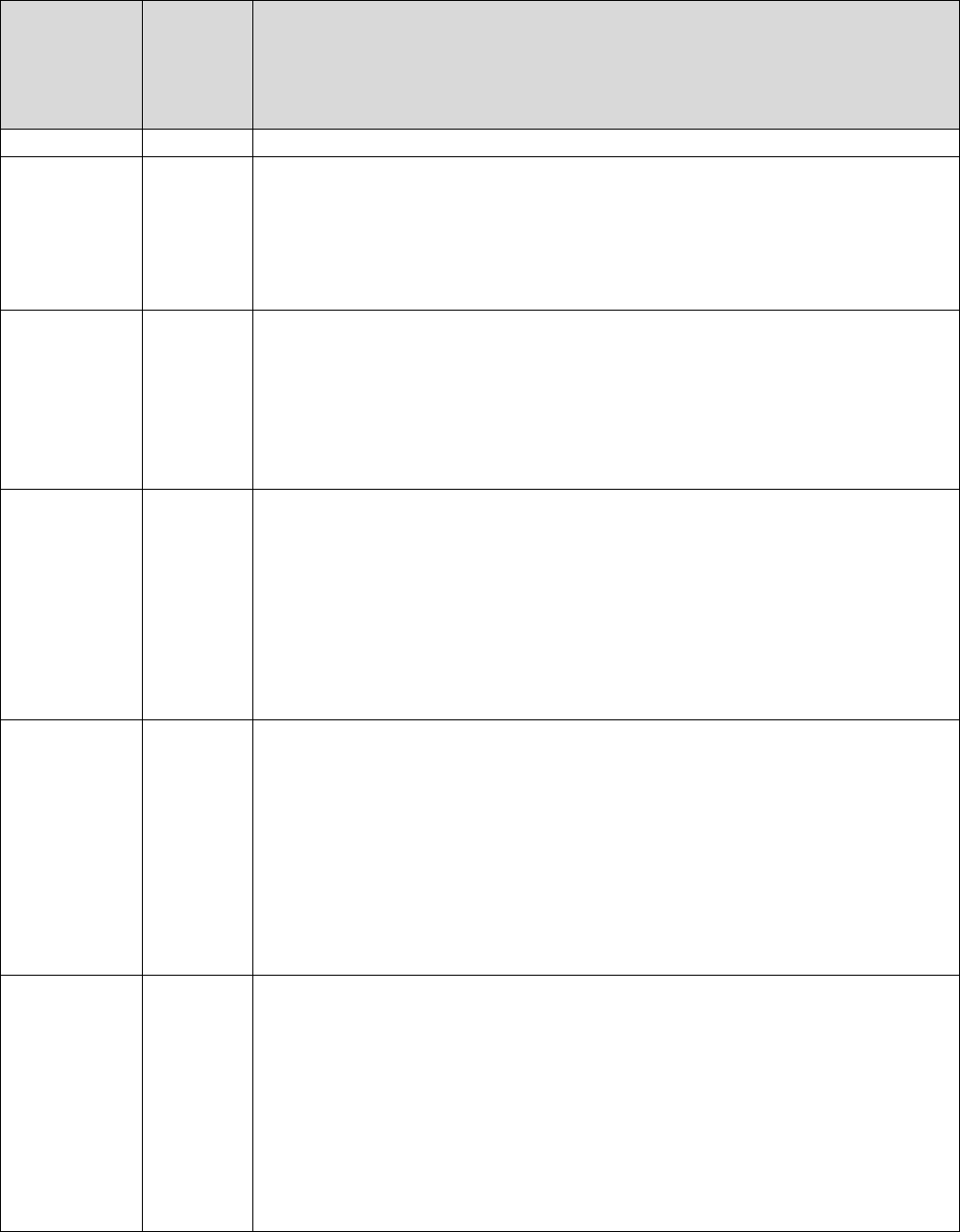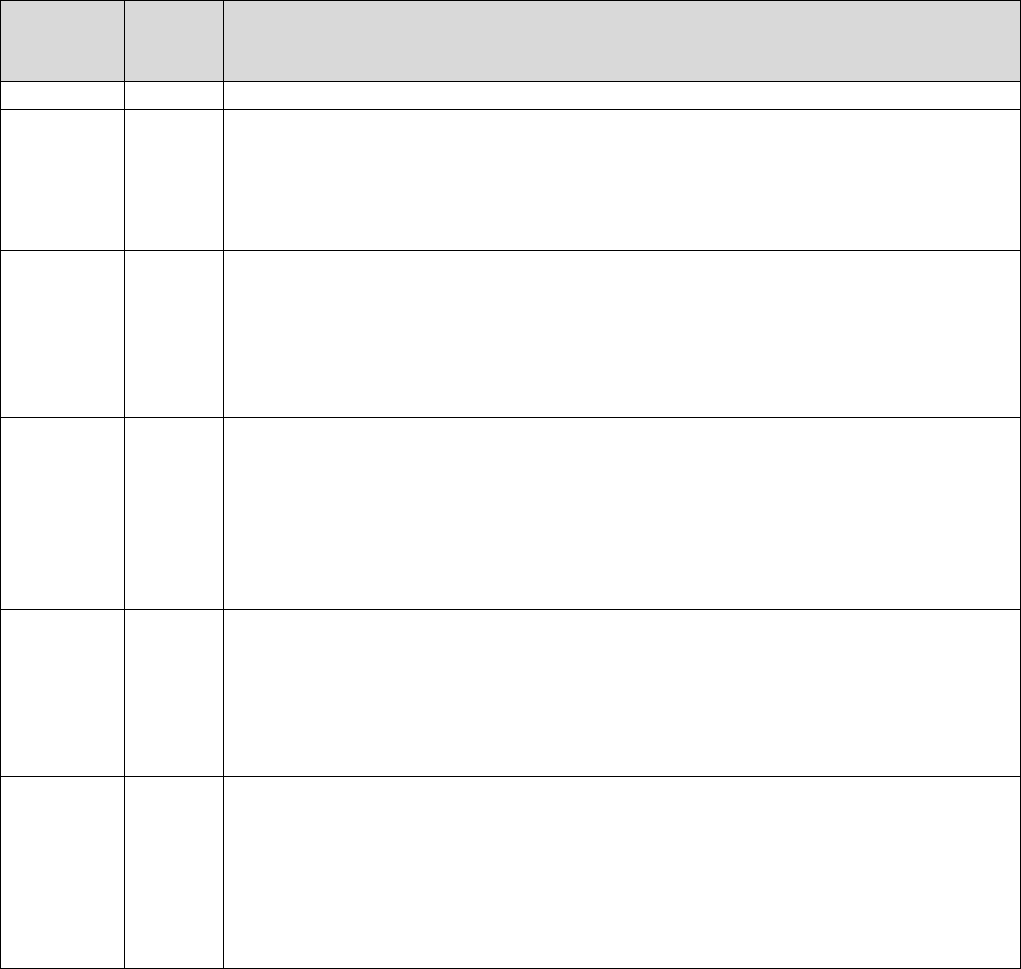
1
Mark Scheme (Results)
June 2019
Pearson Edexcel International GCSE
in English Language (4EA1) Paper 02R

2
Edexcel and BTEC Qualifications
Edexcel and BTEC qualifications are awarded by Pearson, the UK’s largest awarding body.
We provide a wide range of qualifications including academic, vocational,
occupational and specific programmes for employers. For further information visit
our qualifications websites at www.edexcel.com or www.btec.co.uk
. Alternatively, you
can get in touch with us using the details on our contact us page at
www.edexcel.com/contactus.
Pearson: helping people progress, everywhere
Pearson aspires to be the world’s leading learning company. Our aim is to
help everyone progress in their lives through education. We believe in every
kind of learning, for all kinds of people, wherever they are in the world. We’ve been
involved in education for over 150 years, and by working across 70 countries, in
100 languages, we have built an international reputation for our commitment
to high standards and raising achievement through innovation in education. Find
out more about how we can help you and your students at:
www.pearson.com/uk
June 2019
Publications Code 4EA1_02R_1906_MS
All the material in this publication is copyright
© Pearson Education Ltd 2019

3
General Marking Guidance
• All candidates must receive the same treatment. Examiners must mark the first
candidate in exactly the same way as they mark the last.
• Mark schemes should be applied positively. Candidates must be rewarded
for what they have shown they can do rather than penalised for omissions.
• Examiners should mark according to the mark scheme not according to
their perception of where the grade boundaries may lie.
• There is no ceiling on achievement. All marks on the mark scheme should
be used appropriately.
• All the marks on the mark scheme are designed to be awarded. Examiners
should always award full marks if deserved, i.e. if the answer matches the
mark scheme. Examiners should also be prepared to award zero marks if the
candidate’s response is not worthy of credit according to the mark scheme.
• Where some judgement is required, mark schemes will provide the principles
by which marks will be awarded and exemplification may be limited.
• When examiners are in doubt regarding the application of the mark scheme to
a candidate’s response, the team leader must be consulted.
• Crossed out work should be marked UNLESS the candidate has replaced it with
an alternative response.
AO1
Read and understand a variety of texts, selecting and interpreting
information, ideas and perspectives.
AO2
Understand and analyse how writers use linguistic and structural devices
to achieve their effects.
AO4
Communicate effectively and imaginatively, adapting form, tone and
register of writing for specific purposes and audiences.
AO5
Write clearly, using a range of vocabulary and sentence structures, with
appropriate paragraphing and accurate spelling, grammar and
punctuation.
4
This page is intentionally left blank

5
SECTION A: Reading
Question
Number
Indicative content
1
Reward responses that explain how the writer presents the experience with
the girl.
Responses may include the following points about
how the writer
describes the unknown girl:
• the writer repeats that the girl is ‘unknown’, creating a sense of mystery
about her
• the writer puts emphasis on the actions of the girl by repeating what she
is doing: ‘is hennaing my hand’
• the actions of the girl are described in detail using verbs such as
‘squeezes’, ‘icing’, ‘steadies’
• the writer suggests the girl is youthful as she is described as a ‘girl’ rather
than a woman
• the description of the girl’s clothes suggests softness: ‘satin-peach knee’
• the writer describes the process the girl uses as creative, almost like
decorating a cake: ‘She squeezes a wet brown line/from a nozzle’, ‘icing
my hand’
• the writer also describes the girl’s skills as expert, showing that although
she is young she is experienced at her job: ‘which she steadies with hers’,
‘very deftly’
• there is an implication that the girl has little money, as she is described as
working in an ‘evening bazaar’ for ‘a few rupees’
• the girl’s description is more about what she is doing, and where, than her
personality or appearance, creating a sense of generality
• the ending of the poem suggests the girl is symbolic of a traditional India:
‘longing for the unknown girl/in the neon bazaar.’
Responses may include the following points about how the writer
describes feelings about the experience in India:
• the writer’s sensual description of the setting and experience
demonstrates an excitement about them: ‘studded with neon’, ‘wet brown
line’, ‘satin-peach knee’, ‘Colours leave the street’, ‘Now the furious
streets/are hushed’
• the repetition of what the girl is doing creates a sense of peace and
purpose in the poem, which leads to an almost dream-like, enchanted
state in the writer: ‘float up in balloons’, ‘Now the furious streets/are
hushed’
• the writer’s descriptions emphasise the Indian context of the experience:
‘evening bazaar’, ‘for a few rupees’, ‘My shadow-stitched kameez’
• the writer admires the skill required to produce the henna pattern: ‘She
squeezes a wet brown line/from a nozzle’, ‘very deftly’
• the description of the henna pattern demonstrates the admiration the
writer has for the creativity and beauty of the work: ‘a peacock spreads
its lines/across my palm’, ‘I have new brown veins’, ‘soft as a snail
trail/the amber bird beneath’
• the writer’s feelings about the tradition associated with the girl’s work
create contrast with her experience of a more ‘westernised’ India:
‘Dummies in shop-fronts/tilt and stare/with their Western perms’

6
• the writer feels a sense of renewal following the experience: ‘I have new
brown veins’, ‘reveal soft as a snail trail/the amber bird beneath’
• the writer feels that the henna pattern is symbolic of traditional India and
there is a sense of loss after the experience, suggesting this sense of
tradition is being lost: ‘It will fade in a week’
• the ending of the poem suggests that the writer has a strong connection
to and a longing for a more traditional India: ‘I’ll lean across a
country/with my hands outstretched/longing for the unknown girl’.
Responses may include the following points about the use of language and
structure:
• the writer’s use of vocabulary places the experience in the tradition of
India: ‘bazaar’, ‘hennaing’, ‘rupees’, ‘kameez’
• repetition of the experience demonstrates its significance to the writer
and creates emphasis on tradition: ‘an unknown girl/is hennaing my hand’
• onomatopoeia is used to create a sensual, enchanting experience:
‘squeezes’, ‘hushed’, ‘scrape’
• use of simple statements beginning with ‘she’ demonstrates the
importance of what the girl is doing: ‘She squeezes…’, ‘She is icing…’, ‘she
steadies…’
• the poem is structured in free verse, where longer sentences focus on the
experience: ‘In the evening bazaar/for a few rupees/an unknown girl/is
hennaing my hand’; short sentences show contrast and create emphasis:
‘Colours leave the street/float up in balloons’, ‘I have new brown veins’,
‘Now the furious streets/are hushed’
• the writer uses metaphors to demonstrate the creativity of what the girl is
doing: ‘She is icing my hand’, ‘a peacock spreads its lines/across my
palm’
• the symbol of the peacock, the national bird of India, is repeated
throughout the poem to emphasise the writer’s connection to the culture
and traditions of the country
• the writer uses descriptions of colour and light to create a sensual
experience: ‘studded with neon’, ‘wet brown line’, ‘satin-peach knee’,
‘Colours leave the street’, ‘new brown veins’
• alliteration places emphasis on creativity and activity through repetition of
‘c’ sounds: ‘catches’, ‘kameez’, ‘Colours’, ‘curtain cloth/and sofa
cloth/canopy me’, ‘clinging’
• personification is used to show the contrast between westernised and
traditional India: ‘Dummies in shop-fronts/tilt and stare’, ‘Now the furious
streets/are hushed’, ‘When India appears and reappears’
• structurally the poem juxtaposes traditional and westernised India: ‘In the
evening bazaar/studded with neon/an unknown girl/is hennaing
my hand’,
‘with their Western perms/Banners for Miss India 1993’
• similes are used to place emphasis on the traditions of India: ‘like people
who cling/to the sides of a train’, ‘soft as a snail trail’
• the poem is written in present tense until the end when it moves to
consider the future, creating a feeling of a present, immediate experience
happening ‘live’.
Reward all valid points.

7
Level
Mark
AO1 Read and understand a variety of texts, selecting and
interpreting information, ideas and perspectives. (12
marks)
AO2 Understand and analyse how writers use linguistic and
structural devices to achieve their effects. (18 marks)
0
No rewardable material.
Level 1
1-6
• Basic understanding of the text.
• Selection and interpretation of information/ideas/
perspectives is limited.
• Basic identification and little understanding of the language
and/or structure used by writers to achieve effects.
• The use of references is limited.
Level 2
7–12
• Some understanding of the text.
• Selection and interpretation of information/ideas/
perspectives is valid, but not developed.
• Some understanding of and comment on language and
structure and how these are used by writers to achieve
effects, including use of vocabulary.
• The selection of references is valid, but not developed.
Level 3
13–18
• Sound understanding of the text.
• Selection and interpretation of information/ideas/
perspectives is appropriate and relevant to the points being
made.
• Clear understanding and explanation of language and
structure and how these are used by writers to achieve
effects, including use of vocabulary and sentence structure.
• The selection of references is appropriate and relevant to the
points being made.
Level 4
19–24
• Sustained understanding of the text.
• Selection and interpretation of information/ideas/
perspectives is appropriate, detailed and fully supports the
points being made.
• Thorough understanding and exploration of language and
structure and how these are used by writers to achieve
effects, including use of vocabulary, sentence structure and
other language features.
• The selection of references is detailed, appropriate and fully
supports the points being made.
Level 5
25–30
• Perceptive understanding of the text.
• Selection and interpretation of information/ideas/
perspectives is apt and is persuasive in clarifying the points
being made.
• Perceptive understanding and analysis of language and
structure and how these are used by writers to achieve
effects, including use of vocabulary, sentence structure and
other language features.
• The selection of references is discriminating and clarifies the
points being made.

8
Section B: Imaginative Writing
Refer to the writing assessment grids at the end of this section when
marking Questions 2, 3 and 4.
Question
Number
Indicative content
2
Purpose: to write a real or imagined piece about a time a person met
someone important. This may involve a range of approaches,
including: description, anecdote, speech, narrative, literary techniques.
Audience: the writing is for a general readership. Candidates can
choose to write for an audience of adults or young people.
Form: the response may be narrative, descriptive or a monologue.
There should be clear organisation and structure with an introduction,
development of points and a conclusion. Some candidates may
intentionally adapt their language and style to their audience by using,
for example, a more informal or colloquial approach. Candidates may
introduce some literary elements.
Responses may:
• use the poem as inspiration
• explain who the person was, why they were important and
feelings about the meeting
• describe ideas, events, settings and characters
• use appropriate techniques for creative writing: vocabulary,
imagery, language techniques
• use a voice that attempts to make the piece interesting and/or
believable to the chosen audience
• be written in a register and style appropriate for the chosen
form, which may include colloquial elements, dialogue within
description or narrative, or a sustained single voice in a
monologue.
The best-fit approach
An answer may not always satisfy every one of the assessment criteria
for a particular level in order to receive a mark within that level range,
since on individual criteria the answer may meet the descriptor for a
higher or lower mark range. The best-fit approach should be used to
determine the mark which corresponds most closely to the overall
quality of the response.

9
Question
Number
Indicative content
3
Purpose: to write a real or imagined story with the title ‘The Painting’.
This may involve a range of approaches, including: description,
anecdote, speech, literary techniques.
Audience: the writing is for a general readership. Candidates can
choose to write for an audience of adults or young people.
Form: the response may be narrative, descriptive or a monologue.
There should be clear organisation and structure with an introduction,
development of points and a conclusion. Some candidates may
intentionally adapt their language and style to their audience by using,
for example, a more informal or colloquial approach. Candidates may
introduce some literary elements.
Responses may:
• describe the painting, for example: the subject, colours, style
and age, landscape or portrait, its setting, its value
• describe what the painting means to the writer and/or others and
what effects it has
• describe ideas, events, settings and characters
• use appropriate techniques for creative writing: vocabulary,
imagery, language techniques
• use a voice that attempts to make the piece interesting and/or
believable to the chosen audience
• be written in a register and style appropriate for the chosen
form, which may include colloquial elements, dialogue within
description or narrative, or a sustained single voice in a
monologue.
The best-fit approach
An answer may not always satisfy every one of the assessment criteria
for a particular level in order to receive a mark within that level range,
since on individual criteria the answer may meet the descriptor for a
higher or lower mark range. The best-fit approach should be used to
determine the mark which corresponds most closely to the overall
quality of the response.

10
Question
Number
Indicative content
4
Purpose: to write a real or imagined story that starts ‘Everywhere was
silent’. This may involve a range of approaches, including: description,
anecdote, speech, literary techniques.
Audience: the writing is for a general readership. Candidates can
choose to write for an audience of adults or young people.
Form: the response may be narrative, descriptive or a monologue.
There should be clear organisation and structure with an introduction,
development of points and a conclusion. Some candidates may
intentionally adapt their language and style to their audience by using,
for example, a more informal or colloquial approach. Candidates may
introduce some literary elements.
Responses may:
• use the images to inspire writing
• create a character and a scenario about something or someone
• describe ideas, events, settings and characters
• use appropriate techniques for creative writing: vocabulary,
imagery, language techniques
• use a voice that attempts to make the piece interesting and/or
believable to the chosen audience
• be written in a register and style appropriate for the chosen
form, which may include colloquial elements, dialogue within
description or narrative, or a sustained single voice in a
monologue.
The best-fit approach
An answer may not always satisfy every one of the assessment criteria
for a particular level in order to receive a mark within that level range,
since on individual criteria the answer may meet the descriptor for a
higher or lower mark range. The best-fit approach should be used to
determine the mark which corresponds most closely to the overall
quality of the response.
11
This page is intentionally left blank

12
Writing assessment grids for Questions 2, 3 and 4
Level
Mark
AO4 Communicate effectively and imaginatively, adapting form, tone
and register of writing for specific purposes and audiences.
0
No rewardable material.
Level 1
1-3
• Communication is at a basic level, and limited in clarity.
• Little awareness is shown of the purpose of the writing and the
intended reader.
• Little awareness of form, tone and register.
Level 2
4–7
• Communicates in a broadly appropriate way.
• Shows some grasp of the purpose and of the expectations/
requirements of the intended reader.
• Straightforward use of form, tone and register.
Level 3
8-11
• Communicates clearly.
• Shows a clear sense of purpose and understanding of the
expectations/requirements of the intended reader.
• Appropriate use of form, tone and register.
Level 4
12–15
• Communicates successfully.
• A secure realisation of purpose and the
expectations/requirements of the intended reader.
• Effective use of form, tone and register.
Level 5
16–18
• Communication is perceptive and subtle.
• Task is sharply focused on purpose and the expectations/
requirements of the intended reader.
• Sophisticated use of form, tone and register.

13
Level
Mark
AO5 Write clearly, using a range of vocabulary and sentence
structures, with appropriate paragraphing and accurate spelling,
grammar and punctuation.
0
No rewardable material.
Level 1
1-2
• Expresses information and ideas, with limited use of structural
and grammatical features.
• Uses basic vocabulary, often misspelt.
• Uses punctuation with basic control, creating undeveloped, often
repetitive, sentence structures.
Level 2
3–4
• Expresses and orders information and ideas; uses paragraphs and
a range of structural and grammatical features.
• Uses some correctly spelt vocabulary, e.g. words with regular
patterns such as prefixes, suffixes, double consonants.
• Uses punctuation with some control, creating a range of sentence
structures, including coordination and subordination.
Level 3
5-7
• Develops and connects appropriate information and ideas;
structural and grammatical features and paragraphing make the
meaning clear.
• Uses a varied vocabulary and spells words containing irregular
patterns correctly.
• Uses accurate and varied punctuation, adapting sentence
structures as appropriate.
Level 4
8–10
• Manages information and ideas, with structural and grammatical
features used cohesively and deliberately across the text.
• Uses a wide, selective vocabulary with only occasional spelling
errors.
• Positions a range of punctuation for clarity, managing sentence
structures for deliberate effect.
Level 5
11–12
• Manipulates complex ideas, utilising a range of structural and
grammatical features to support coherence and cohesion.
• Uses extensive vocabulary strategically; rare spelling errors do
not detract from overall meaning.
• Punctuates writing with accuracy to aid emphasis and precision,
using a range of sentence structures accurately and selectively to
achieve particular effects.
14
Pearson Education Limited. Registered company number 872828
with its registered office at 80 Strand, London, WC2R 0RL, United Kingdom
